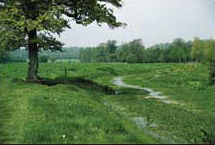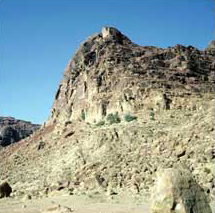1 Springs
We have seen that where precipitation reaches the ground, some runs off the surface into streams and rivers and some of it infiltrates, passing through the soil. Water that reaches the water table to become groundwater may eventually re-emerge at the surface as springs where the water table intersects the surface. Almost all streams and rivers have springs or seepages as their ultimate source, or are fed by them at various points along their courses.
Artesian springs that are associated with confined aquifers. These are most obvious on land, but can also occur on the sea bed, a fact long known to sailors who have used them to fill up with fresh water while still at sea. In such cases, an aquifer has its recharge area on land but extends beyond the coast to underlie the sea bed, where if the geology and topography are favourable, and the aquifer intersects the sea bed, fresh water may emerge.
Most springs, however, are ordinary water-table springs, and these can be of several different kinds depending on the geological setting:
Valley springs develop in valleys where the ground surface intersects the water table. In southern England, a number of seasonal springs occur in the Chalk valleys when the water table rises during a wet winter. These temporary streams are called bournes (Figure 1), reflected in some of the place names in the area, e.g. Winterbourne Stoke in Dorset. These bournes dry up in summer, when the water table drops below the ground surface.
Stratum springs form where the downward flow of groundwater is prevented by an underlying impermeable layer of rock, which can result in a line of springs emerging at the boundary between the two layers (Figure 2).
Solution channel springs typically occur in limestone districts where groundwater has created caves and channels by dissolving calcium carbonate along bedding planes and fractures, and then returned to the surface where impermeable strata prevent further downwards migration.


